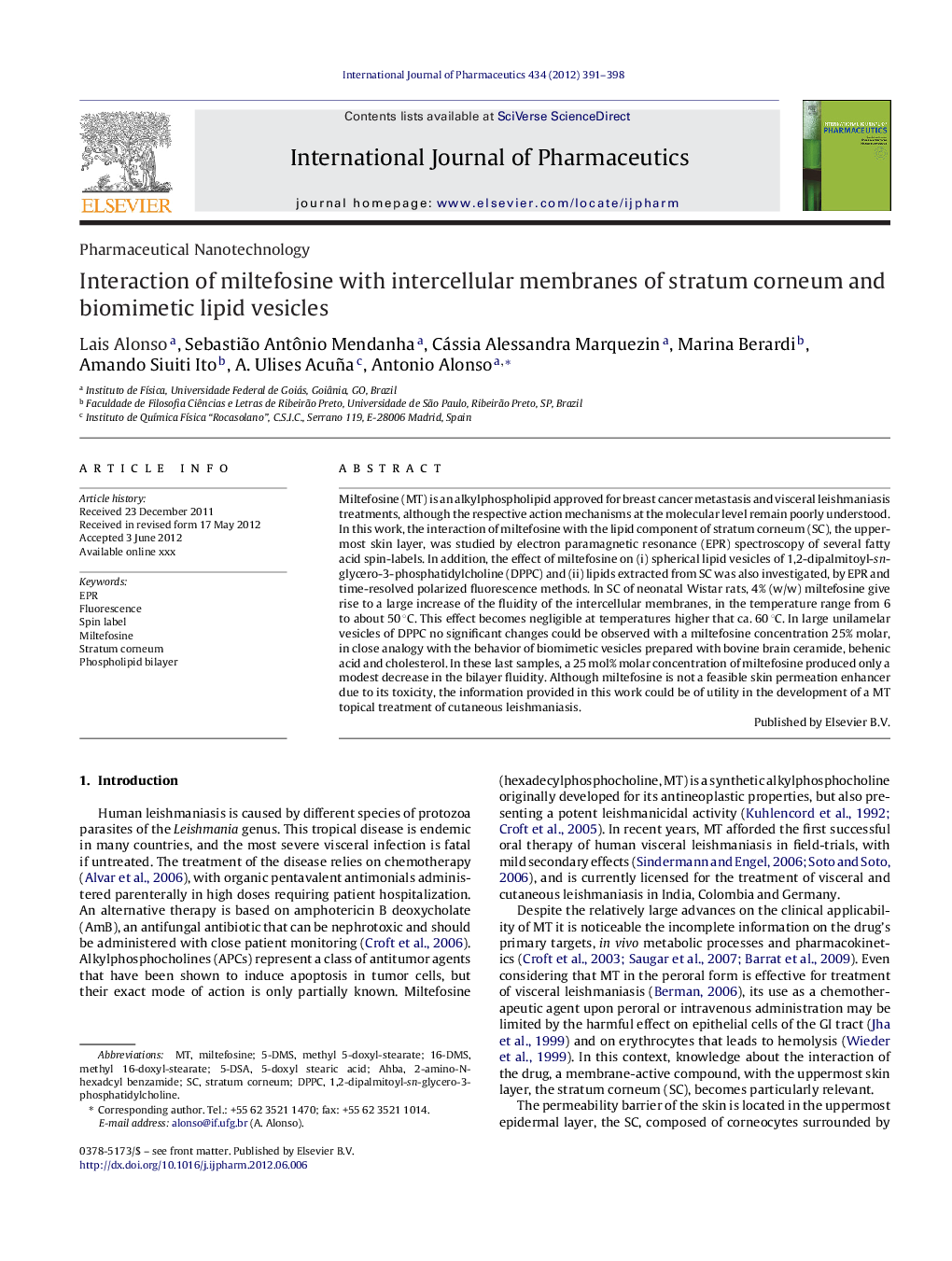| Article ID | Journal | Published Year | Pages | File Type |
|---|---|---|---|---|
| 5820576 | International Journal of Pharmaceutics | 2012 | 8 Pages |
Abstract
Miltefosine (MT) is an alkylphospholipid approved for breast cancer metastasis and visceral leishmaniasis treatments, although the respective action mechanisms at the molecular level remain poorly understood. In this work, the interaction of miltefosine with the lipid component of stratum corneum (SC), the uppermost skin layer, was studied by electron paramagnetic resonance (EPR) spectroscopy of several fatty acid spin-labels. In addition, the effect of miltefosine on (i) spherical lipid vesicles of 1,2-dipalmitoyl-sn-glycero-3-phosphatidylcholine (DPPC) and (ii) lipids extracted from SC was also investigated, by EPR and time-resolved polarized fluorescence methods. In SC of neonatal Wistar rats, 4% (w/w) miltefosine give rise to a large increase of the fluidity of the intercellular membranes, in the temperature range from 6 to about 50 °C. This effect becomes negligible at temperatures higher that ca. 60 °C. In large unilamelar vesicles of DPPC no significant changes could be observed with a miltefosine concentration 25% molar, in close analogy with the behavior of biomimetic vesicles prepared with bovine brain ceramide, behenic acid and cholesterol. In these last samples, a 25 mol% molar concentration of miltefosine produced only a modest decrease in the bilayer fluidity. Although miltefosine is not a feasible skin permeation enhancer due to its toxicity, the information provided in this work could be of utility in the development of a MT topical treatment of cutaneous leishmaniasis.
Related Topics
Health Sciences
Pharmacology, Toxicology and Pharmaceutical Science
Pharmaceutical Science
Authors
Lais Alonso, Sebastião Antônio Mendanha, Cássia Alessandra Marquezin, Marina Berardi, Amando Siuiti Ito, A. Ulises Acuña, Antonio Alonso,
